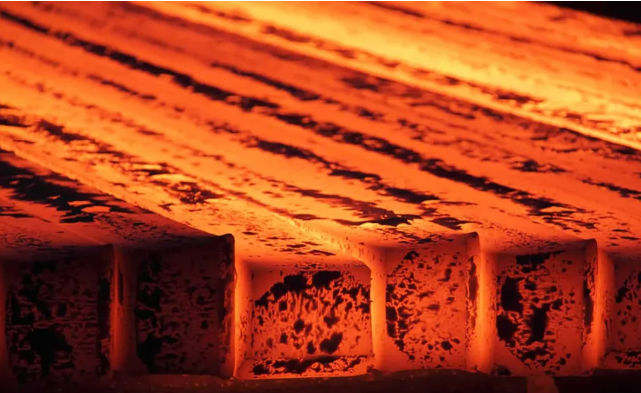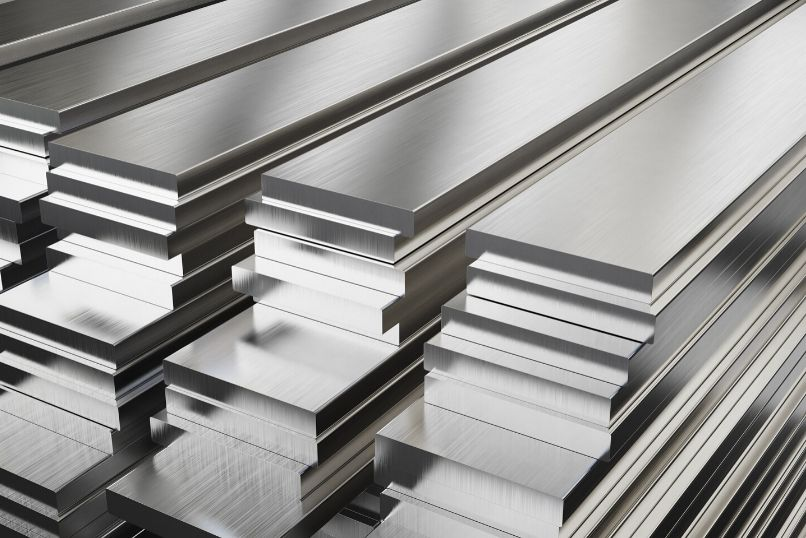For friends who are engaged in processing, the selection of cutting tools is an issue they can’t do without every day. Of course, the role of cutting tools is to remove excess surface materials. There are many choices for a wide range of materials. When it comes to stainless steel, there seem to be many types. For example, for 304 and 316 stainless steel, how much do you know about these two grades?
Stainless steel grades 304 and 316 are two of the most widely used stainless steel casting grades in the world. Both have excellent corrosion resistance and use value. 304 stainless steel contains 16% to 24% chromium and a small amount of carbon and manganese. The most common form is 18-8 stainless steel. It contains 18% chromium and 8% nickel. Grade 316 has almost the same physical and mechanical properties as 304 stainless steel. The main difference is that 316 stainless steel contains about 2% to 3% molybdenum. The additive can improve corrosion resistance, especially against chlorides and other industrial solvents.
For 304 and 316 stainless steel, there is no definition of “which one is better”. Because different stainless steel materials have different uses. Today, let’s understand the difference between 304 stainless steel and 316 stainless steel.
1. Chemical composition differences
As we can see from the table, the biggest difference between 304 stainless steel and 316 stainless steel is that 316 stainless steel has 2-3% more molybdenum than 304 stainless steel. This helps resist corrosion from chlorides (such as seawater and deicing salts).
The molybdenum content of grades that replace the 300 series can be up to 7%. They have better resistance to chlorides. But this heavy-duty resistance is only required under industrial or high-concentration exposure conditions.
Grade | 304 Material | 316 Material |
Carbon | 0.08%maximum | 0.08%maximum |
Silicon | 1.00%maximum | 1.00%maximum |
Manganese | 2.00maximum | 2.00maximum |
Phosphorus | 0.045%maximum | 0.045%maximum |
Sulfur | 0.015% | 0.015% |
Nitrogen | 0.10% | 0.10% |
Chromium | 18.00.20.00% | 16.00-18.00% |
Nickel | 8.00-10.50% | 10.00-14.00% |
Molybdenum | 2.00-3.00% |
2. Performance differences
304 stainless steel is the most common steel grade. As a widely used metal, it has good corrosion resistance, heat resistance, low-temperature strength and mechanical properties. It has good hot work-ability such as stamping and bending. There is no heat treatment hardening phenomenon (non-magnetic, service temperature -196℃~ 800℃).
316 stainless steel, due to the addition of molybdenum, has particularly good corrosion resistance, atmospheric corrosion resistance, and high-temperature strength. It can be used under harsh conditions. Excellent work hardening properties (non-magnetic).
3. Application differences
304 application scope:
- Kitchen accessories such as sinks and splashbacks, pans, cutlery, tableware, cabinets.
- Kitchen appliances such as refrigerators and dishwashers.
- Household items such as indoor plumbing, water heaters, boilers, bathtubs.
- Heat exchangers.
- Commercial food processing equipment, breweries, pharmaceutical production equipment.
- Manufacturing nuts, bolts, screws and nuts.
- Water pipes, storage tanks, indoor electrical enclosures, car interiors.
- Decorative strips.
316 application scope:
- Chemical pipelines.
- Pharmaceutical equipment.
- Medical equipment and tools.
- Stainless steel floats.
- Structural steel and components in marine environments.
- Manufacturing food, chemical and petroleum production and processing equipment.
- Laboratory bench and equipment construction.
- Building panels in coastal areas.
- Marine hardware and tubing.
4. Difference in corrosion resistance
Among 304 and 316 stainless steel, 316 stainless steel has better corrosion resistance than 304 stainless steel. It has good corrosion resistance in pulp and paper production. In addition, 316 stainless steel can also resist the erosion of marine and corrosive industrial atmospheres.
Generally speaking, there is little difference in chemical resistance between 304 and 316 stainless steel. However, there are differences in certain environments.
The originally developed stainless steel was 304. In some cases, this material is sensitive to pitting corrosion. Adding an additional 2-3% of molybdenum can reduce this sensitivity. Thus, 316 was born. In addition, this additional molybdenum can also reduce the corrosion of certain hot organic acids. 316 stainless steel has almost become the standard material in the food and beverage industry. Due to the shortage of molybdenum in the world and the nickel content in 316 stainless steel. 316 stainless steel is more expensive than 304 stainless steel.
Pitting corrosion is a phenomenon mainly caused by corrosion deposition on the surface of stainless steel. This is because a chromium oxide protective layer will not form when there is a lack of oxygen. Especially for small valves, the possibility of sediment on the valve plate is very small. Therefore, pitting corrosion is also rare. Among them are various water media (distilled water, drinking water, river water, boiler water, seawater, etc.).
304 and 316 stainless steel have almost the same corrosion resistance. Unless the chloride ion content in the medium is very high. Now, 316 stainless steel is more suitable. In most cases, the corrosion resistance of 304 and 316 stainless steel is not much different. But in some cases, it can also be very different. Specific analysis is needed.
Generally speaking, valve users should be aware of this. Because they choose the material of containers and pipes according to the medium conditions.
5. Heat resistance
316 stainless steel has good oxidation resistance when used intermittently below 1600°C and continuously below 1700°C. In the range of 800-1575°C, 316 stainless steel cannot be continuous. When 316 stainless steel is continuously used outside this temperature range, it has good heat resistance. Ultra-low carbon stainless steel 316 L has better resistance to carbide precipitation than SS 316. It can be used within the above temperature range.

6. Heat Treatment
The annealing process for heat treatment is carried out in the temperature range of 1850℃ to 2050℃. Then rapid annealing and rapid cooling are performed. 316 stainless steel cannot be hardened by heat treatment.
7. Welding
Among 304 and 316 stainless steel, 316 stainless steel has good welding performance. All standard welding methods can be used for welding. During welding, stainless steel electrodes or welding rods such as 316 Cb, 316 L or 309 Cb can be used for welding according to the application. In order to obtain the best corrosion resistance, SS 316 weldments need to be post-weld annealed. If 316 L stainless steel is used, post-weld annealing is not required.
8. Cost difference
The cost of stainless steel largely depends on the composition of the alloy. All stainless steels require at least 10.5% chromium content. They are alloys made with iron. However, the various other elements present can have an impact on performance and characteristics as well as the final cost. 316 contains at least 2.0% molybdenum. It is more corrosion resistant than 304 stainless steel. Molybdenum is a more expensive element and generally it makes 316 a more expensive metal grade.

Among all steels, austenitic stainless steel has the lowest yield point. So in terms of mechanical properties, austenitic stainless steel is not the best material for valve stems. Because of a certain strength, the diameter of the valve stem will increase. The yield point cannot be increased by heat treatment, but it can be increased by cold forming.
Name | 304 Material | 316 Material |
Yield Strength | ≥205 | ≥175 |
Tensile Strength | ≥520 | ≥480 |
Elongation(%) | ≥40 | ≥40 |
Hardness | HB≤187,HRB≤90,≤200 | HB≤187,HRB≤90,≤200 |
Density | 7.93 g/cm³ | 7.87 g/cm³ |
Resistivity | 0.73Ωmm²/m | 0.71Ωmm²/m |
Melting Point | 1398-1420℃ | 1398-1420℃ |
Due to the wide application of Austenite stainless steel, people are left with the wrong impression that all stainless steels are non-magnetic. For Austenite stainless steel, it can basically be understood as non-magnetic. Because quenched forged steel is in this case. But cold-formed 304 will have a certain magnetism. For cast steel, if it is 100% Austenite stainless steel, it is non-magnetic.
9. Low carbon types
The corrosion resistance of Austenite stainless steel comes from the chromium oxide protective layer formed on the metal surface. If the material is heated to a temperature between 450°C and 900°C. The structure of the material changes and chromium carbide is formed along the crystal edges. Therefore, a chromium oxide protective layer cannot be formed at the crystal edges, resulting in a decrease in corrosion resistance. This type of corrosion is called “inter-granular corrosion”.
304 L stainless steel and 316 L stainless steel were developed to combat this corrosion. Both 304 L stainless steel and 316 L stainless steel have a lower carbon content. Due to the reduced carbon content, no chromium carbide is produced and there is no inter-granular corrosion. It should be noted that higher inter-granular corrosion sensitivity does not mean that non-low-carbon materials are more susceptible to corrosion. This sensitivity is also higher in high-chlorine environments.
Please note: This phenomenon is caused by high temperatures (450°C – 900°C). Usually welding is the direct cause of reaching this temperature. For soft-seated traditional butterfly valves, using low-carbon stainless steel is not of much significance because we do not weld on the valve plate. However, most specifications require 304 L stainless steel or 316 L stainless steel.



